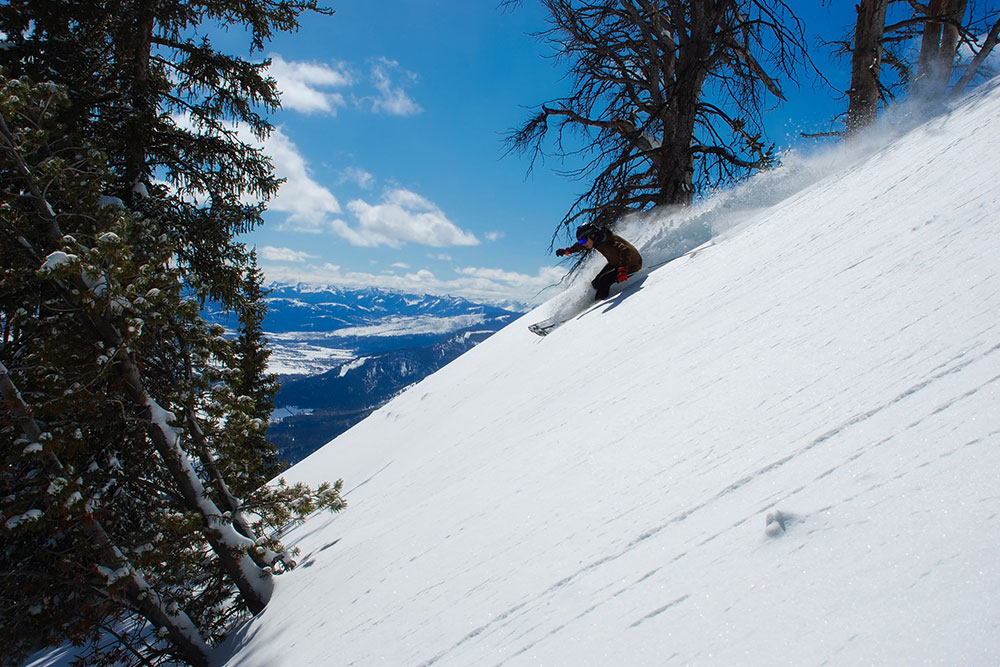Alyssa Bialowas
Compared to the summer months, physical activity and total daily expenditure have been found to decline significantly in the winter (Dannenberg et al.). With cardiovascular diseases on the rise, and a big risk factor being physical inactivity, it’s becoming more and more important to identify activities that increase physical activity during winter.
Outdoor sports like alpine skiing and cross country skiing are perhaps some of the best ways to stay active during the winter season. They provide a way to get out into nature while keeping you in peak physical shape. But are they a good enough alternative to indoor training?
Related Article: Alpine Skiing: A Form Of HIIT
The Study
To determine whether it’s possible to overcome the winter activity deficit, a study by Stöggl et. al (2016) compared individuals’ cardiorespiratory and metabolic response across alpine skiing (AS), cross country skiing (XCS) and indoor cycling (IC). Nineteen healthy participants under the age of 30 performed an AS, XCS, and IC session on three separate days with a minimum of 48 hours in between. Each session consisted of three 4-min stages of low, moderate and high intensity. The researchers aimed to analyse the effects of gender, age and fitness level and its interaction with exercise intensity and exercise mode.
The Results
Throughout the sessions, the participants were tested on oxygen uptake, total energy expenditure, heart rate, blood lactate, rating of perceived exertion for whole body, legs only, arms only, and kinematic data of skiing. Oxygen uptake and total energy expenditure were higher during XCS and IC than AS. At least 2 ½ hours of AS were required to meet the same energy expenditure as XCS and IC. XCS was found to be the most effective activity for generating a high oxygen uptake and energy expenditure, and AS was the most demanding activity for the legs. AS can be maximized by high intensity moves like short turn skiing, and using short or no breaks while going downhill.
Cross country skiing and alpine skiing can indeed be tailored to serve as suitable replacements to IC and combat the winter activity deficit.
Related Article: Ski Training Magic Part 1: Leg Blasters
Takeaway
Further research could look at a wider variety of participants over a longer time period to see if the results stay consistent. Since the AS intensity was influenced by factors such as slope conditions, instructor pace and skiers in the measurement zone, more research would be beneficial to see if different factors impact the measurements.
You Might Like:
Last Minute Outdoorsy Gift Guide
Hank Shell I’m not sure if you were aware of this, but IT’S ALMOST CHRISTMAS, Y’ALL. If you’re anything like me, and hopefully you’re not, you’ve put off gift buying for a couple of those...Ski Training Magic Part 3: Intense Low-intensity
Hank Shell I gotta be honest guys. This lack of snow has got me feeling kind of blue. These La Niña years tend to be no bueno for us shmucks down here in the Southwest,...Success Factors for Olympic Cross-Country Skiing
Alyssa Bialowas Introduction On a mission to find best-practice training programs for both sprint and distance cross-country skiing, I came across research from Norway and Sweden that reappraised success factors for Olympic cross-country skiing. Cross-country...Roller Skiing Predicts Youth Cross-Country Skiing Performance
Alyssa Bialowas Cross-country skiing has gained popularity as one of the most well-loved winter sports. Adults and children alike are making names for themselves as elite cross-country skiers. And, along with any elite sport, training...HIIT Exercises To Prep Your Body For Winter Sports
Alyssa Bialowas As an avid snowboarder and former competitive hockey player, winter sports have always been a significant part of my life. If you’re a big fan of winter sports too, you’re likely aware of...Ski Training Magic Part 2: Hurry Up and Weight!
Hank Shell Another week, another round of snowfall in Colorado’s San Juans. My friend and I awoke to find our hunting camp blanketed in two inches of the white stuff this past weekend, and as...References
Dannenberg A.L., Keller J.B., Wilson P.W., Castelli W.P. (1989) Leisure time physical activity in the Framingham Offspring Study. Description, seasonal variation, and risk factor correlates. American Journal of Epidemiology, 129: 76-88.
Stöggl, T., Schwarzl, C., Müller, E.E., Nagasaki, M., Stöggl, J., Scheiber, P., Schönfelder, M., and Niebauer, J. (2016). A Comparison between Alpine Skiing, Cross-Country Skiing and Indoor Cycling on Cardiorespiratory and Metabolic Response. Journal of Sports Science and Medicine, 15: 184-195.
